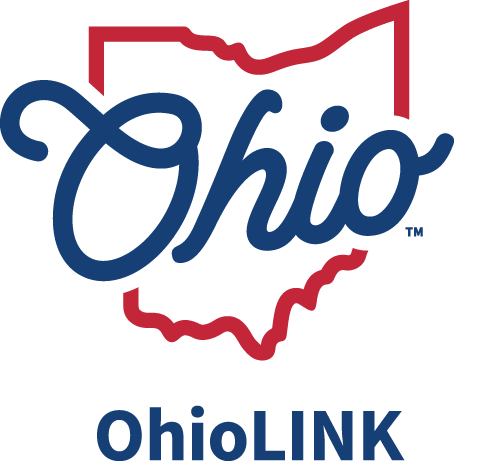Every member institution of OhioLINK is assigned a PCIRC priority number for participating in the PCIRC online lending and borrowing system. This page explains the "why" and "how" of the PCIRC priority. If you still have questions, please contact Nichole Frederick or Theda Schwing.
Why
OhioLINK established the priority system in the early 2000s to help balance the lending across the state. Prior to that, every institution had an equal chance of being a lender for any particular item. The system just simply chose randomly from a list of available copies. Since some institutions had stronger and larger collections than other institutions, this meant that those institutions often became the lender of choice. This caused some inequities in lending where some institutions were major lenders while other institutions remained major borrowers. It was decided that an attempt would be made to equalize the lending and borrowing so each institution’s ratio of lending to borrowing was as close to one to one as possible. A priority table was established in which each institution was assigned a number to reflect their lending status. The higher the number, the higher the chance of your copy being chosen to be the lending copy of all the available copies in the list. This table, although not perfect, has balanced the lending to borrowing ratios for many institutions.
How
Initially, there were two levels of priority an institution could be assigned: low or high. If your institution tended to be a net lender, you were assigned a low priority. A low priority caused your library to receive fewer requests on average than if you had a higher priority. A high priority meant the opposite in that you were generally a net borrower. In this scenario, the high priority would cause your library to generally receive more requests than if you had a lower priority. We found that with just two priorities, some institutions would swing rather dramatically between being a net lender and a net borrower. So, a third priority of medium and then a fourth priority of medium-high were added to make those swings less dramatic.
Priorities for each institution (and they are only by institution, not by PCIRC stop), change twice per year, once in July for the fall semester and again in January for the spring semester. How they are determined is that OhioLINK staff review the lending & borrowing ratios for each institution (using PCIRC statistics). The closer an institution’s lending & borrowing ratio is to 1, the more balanced their lending and borrowing are. Any ratio that is more than 1.10 is considered a net increase in lending and the priority for that institution is lowered one level (i.e. they will lend less in the next semester). Any ratio less than .90 is considered a net borrrower and their priority is raised one level. If an institution’s ratio falls between .90 and 1.10, then they are considered in balance and their priority level stays the same.
Many institutions prefer to be net lenders. These institutions are allowed to remain at high priority to maintain that status. Other institutions may have some local issue with staffing or facilities and need to temporarily lower their priority to lend less. This is allowed. Just contact Nichole or Theda if you have a special need.
The current library priorities are posted below. They are updated approximately every six months
Current Priorities
Updated 12/12/24
| 5-Character Code | Institution | Jan-May 2025 |
|---|---|---|
| ak2ug | Akron, University of | H |
| an3bg | Antioch College | M |
| as2ug | Ashland University | MH |
| bw3bg | Baldwin Wallace University | H |
| be4tg | Belmont College | L |
| bf1ug | Bluffton University | H |
| bg1ug | Bowling Green State University | MH |
| cp4ug | Capital University | H |
| ca2ug | Case Western Reserve University | H |
| cd3bg | Cedarville University | MH |
| ce3ug | Central State University | L |
| ci3ug | Cincinnati, University of | M |
| ct3tg | Cincinnati State Technical & Community College | L |
| cl3tg | Clark State College | H |
| cc2mh | Cleveland Clinic | MH |
| cs2ug | Cleveland State University | H |
| co4bg | Columbus College of Art and Design | L |
| co4tg | Columbus State Community College | H |
| cc2tg | Cuyahoga Community College | L |
| da3ug | Dayton, University of | H |
| de1bg | Defiance College | H |
| de4ug | Denison University | H |
| ed3tg | Edison State Community College | H |
| fi1ug | Findlay, University of | H |
| fr4ug | Franklin University | L |
| fr2ug | Franciscan University of Steubenville | MH |
| he1bg | Heidelberg College | L |
| hr2bg | Hiram College | L |
| ho4tg | Hocking College | L |
| jo2ug | John Carroll University | MH |
| ke2ug | Kent State University | H |
| ke2bg | Kenyon College | M |
| la2tg | Lakeland Community College | L |
| le2bg | Lake Erie College | L |
| lo2tg | Lorain County Community College | M |
| lo1bg | Lourdes University | H |
| ma2bg | Malone University | L |
| ma4bg | Marietta College | L |
| me1bg | Mercy College | MH |
| ms4sg | Methodist Theological School in Ohio | M |
| mu3ug | Miami University | M |
| mt4bg | Mount Carmel College of Nursing | H |
| mo3bg | Mount Saint Joseph University | MH |
| at3ug | Mount St. Mary's Seminary & School of Theology | L |
| mu2bg | Mount Union, University of | H |
| mv4bg | Mount Vernon Nazarene College | H |
| mu4bg | Muskingum University | H |
| ne2mh | Northeast Ohio Medical University | H |
| no1tg | Northwest State Community College | L |
| nw1bg | Northwestern Ohio, University of | L |
| ob2bg | Oberlin College | L |
| oc4bg | Ohio Christian University | M |
| dm4bg | Ohio Dominican University | MH |
| on1ug | Ohio Northern University | L |
| os4ug | Ohio State University | H |
| ou4ug | Ohio University | H |
| ow4ug | Ohio Wesleyan University | MH |
| ot4bg | Otterbein University | M |
| ow1tg | Owens Community College | H |
| pc4sg | Pontifical College Josephinum | L |
| ri4tg | Rio Grande, University of | L |
| sm2ug | Saint Mary Seminary | VL |
| sh4ug | Shawnee State University | L |
| si3tg | Sinclair Community College | MH |
| so3tg | Southern State Community College | H |
| sl4gg | State Library of Ohio | H |
| te1tg | Terra Community College | M |
| ti1ug | Tiffin University | MH |
| to1ug | Toledo, University of | MH |
| us2bg | Ursuline College | L |
| wa2ug | Walsh University | H |
| wa4tg | Washington State College of Ohio | MH |
| wl3bg | Wilmington College | MH |
| wn3ug | Wittenberg University | M |
| wo2bg | College of Wooster | L |
| ws3ug | Wright State University | H |
| xa3ug | Xavier University | H |
| ys2ug | Youngstown State University | H |

